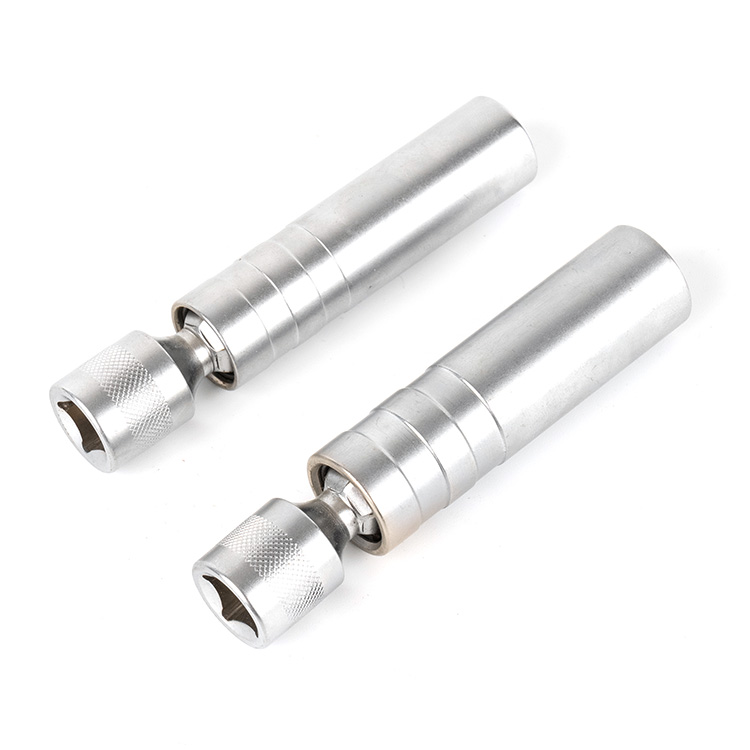How to use the spark plug socket correctly?
2025-07-24
As a special tool for disassembling and installing spark plugs, the spark plug socket's use standardization directly affects the safety of operation and the integrity of parts. Mastering the scientific use method can effectively avoid problems such as thread stripping and tool damage, and ensure the efficient development of engine maintenance work.

The matching check before use is the basis. The corresponding socket needs to be selected according to the size of the spark plug hexagonal head (common 14mm, 16mm, 21mm). The gap between the inner wall of the socket and the spark plug head should be ≤0.3mm. Too loose will easily cause slippage and wear, and too tight may get stuck on the spark plug. At the same time, check whether the socket has cracks and whether the inner wall is smooth. The magnetic socket needs to confirm the adsorption force (can firmly adsorb more than 5g of metal objects) to avoid the spark plug falling off the cylinder during disassembly and assembly.
The angle and force control during operation are key. When inserting the spark plug, the socket must be kept completely perpendicular to the spark plug axis. An inclination angle exceeding 5° will cause uneven force on the hexagonal head, causing deformation or slip angle. When disassembling, first push the sleeve by hand to ensure the fit, then use a ratchet wrench to slowly increase the force (initial torque ≤ 10N・m). If you encounter resistance, do not use a steel pipe to extend the force arm. You should drip loosening agent and let it stand before operating. When installing the spark plug, first use the sleeve to manually pre-tighten it 2-3 times, confirm that the thread is correct, and then use a torque wrench to tighten it according to the specified torque (usually 18-35N・m, refer to the vehicle manual for details).
Special scene usage skills need to be mastered. When operating in a deep-hole cylinder, you can put a rubber tube (length 5-8cm) on the sleeve to use friction to bring the spark plug out of the cylinder; when dealing with severely corroded spark plugs, choose a sleeve with a rubber sealing ring to enhance the sealing and prevent debris from falling into the cylinder. After use, the oil and metal debris on the inner wall of the sleeve should be cleaned in time, wiped with a special cleaner and dried, and stored to avoid stacking and squeezing with other tools to prevent deformation.
Correct use of spark plug sockets can reduce the operating error rate by more than 80%, not only extending the tool life (up to more than 100 effective uses), but also protecting the spark plug and cylinder thread. It is an indispensable standard operation link in engine maintenance and is worth focusing on by auto repair practitioners and DIY car owners.



